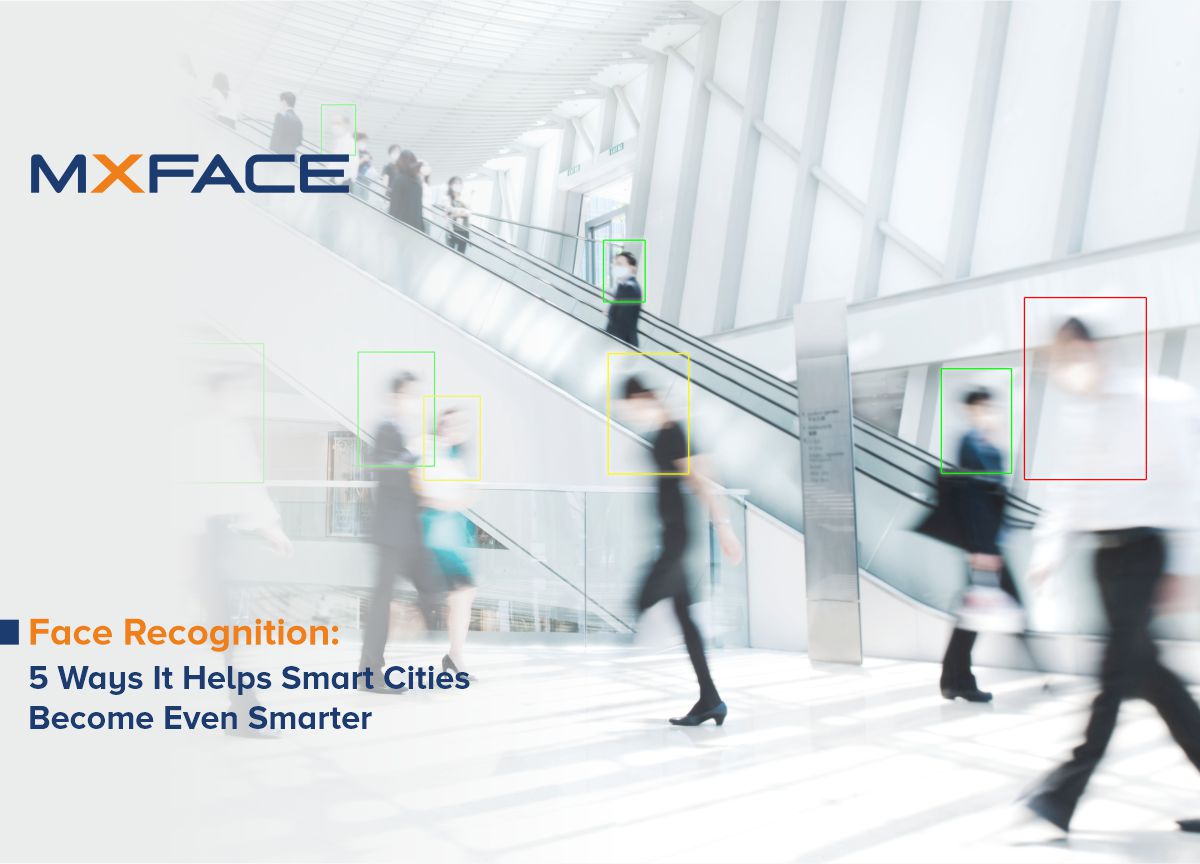Face Recognition: 5 Ways It Helps Smart Cities Become Even Smarter

Face recognition is already a popular technology in smart cities around the globe, helping them to become even smarter. The COVID 19 fueled the adaption of facial recognition technology in smart cities for security, surveillance, and a helping hand for public and law enforcement agencies. According to Market and Market research, facial recognition will grow at a CAGR of 17.2% to reach 8.5 billion by 2025. A major driving factor in the facial recognition market is surveillance systems, and their main use is in smart cities. Smart cities are also developing around the globe. Its market value may grow to reach $873.7 billion by 2026.
Insight of these promising statistics, let's look at some of the most critical uses of face recognition systems in smart cities.
Top 5 applications of facial recognition systems in smart cities
Smart cities integrate IoT and information technology to provide real-time data to municipalities or government agencies, allowing them to operate efficiently and secure public places. If facial recognition deploys correctly, it can accelerate these processes and makes city life smarter and hassle-free. Here are our top 5 handpicked uses of biometric technologies in smart cities.
1. Find missing people
Face recognition algorithms have evolved so well in recent years that they can now recognize a person from a crowd in any lighting or angle change. This will aid in the search for missing or kidnapped people and children from anywhere in the city. If the system discovers a match to the missing person's database, it will notify the authorities of the person's real-time location. This is an effective technique for combating human trafficking and kidnapping.
2. Tracking offenders to stop crime from happening
The criminal database integrated into facial recognition will continuously track matching faces in the city from the database. In particular, before banks, shopping areas, ATMs, and other sensitive areas. Law enforcement authorities get alerts in case of any matching found, allowing them to intervene before a crime occurs.
3. For rescue applications
Face recognition technology can lend a helping hand during difficult times. In the case of natural calamities, people may get trapped in remote locations. Facial recognition cameras fixed at various parts of the city make authorities find trapped people and plan rescue missions accordingly.
4. New shopping experience
Smart cities are public-private partnerships that aim to make cities intelligent from the ground level. Automated retail stores are a vital component in making cities smarter. The goal is that consumers can stroll into a store, get what they need, and then walk out. Here a face recognition online system tracks a person while inside the store and keeps count of what they take with the help of image recognition. As the consumer walks out of the store, money will automatically debit from his bank account linked to his ID.
5. Helping differently-abled people
A city is not smart enough if it is not helping all levels of people. A smart city must provide a safe and secure journey through the city for differently-abled people. For that, a facial recognition system can detect such people in the city and mark their location to enable required arrangements in bus stops, public places, and roads to ensure their safety. The system also helps in finding people with conditions like Alzheimer's and can help them go back to their homes.
Final note
The COVID-19 crisis has increased the use of face recognition systems in public places with thermal scanners. Also, technology gained great acceptance among people during this time. In the long run, this could help to increase usage in various sectors in smart cities and municipalities. Like, the installation in events and public functions to avoid treat.
The technology is evolving to recognize occulted faces and faces from different angles. And, its usage in the retail and health care sectors helped gain resident trust, which will become an asset in the future.


Comments